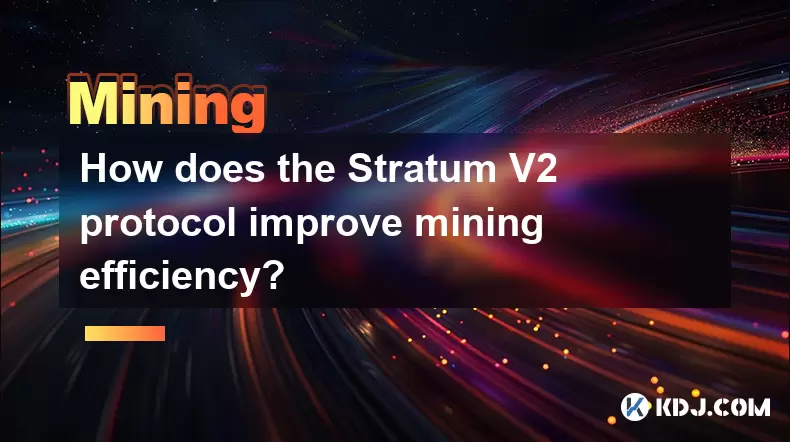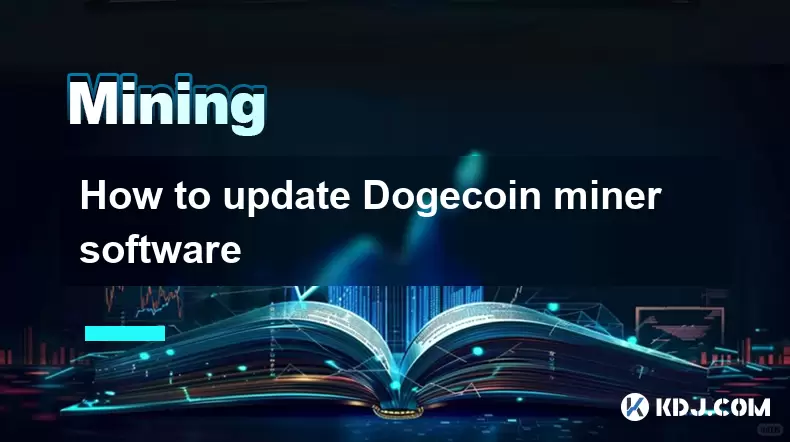-
 Bitcoin
Bitcoin $117,576.6195
-0.21% -
 Ethereum
Ethereum $2,938.5668
-1.35% -
 XRP
XRP $2.7699
4.60% -
 Tether USDt
Tether USDt $1.0003
0.01% -
 BNB
BNB $688.1624
-0.01% -
 Solana
Solana $160.5113
-1.95% -
 USDC
USDC $0.9999
0.01% -
 Dogecoin
Dogecoin $0.1976
-0.70% -
 TRON
TRON $0.3008
1.54% -
 Cardano
Cardano $0.7159
-2.16% -
 Hyperliquid
Hyperliquid $46.2240
2.04% -
 Stellar
Stellar $0.3966
22.03% -
 Sui
Sui $3.3928
-3.11% -
 Chainlink
Chainlink $15.1204
-2.43% -
 Bitcoin Cash
Bitcoin Cash $515.1741
-1.19% -
 Avalanche
Avalanche $20.8130
-0.90% -
 Hedera
Hedera $0.2001
-2.12% -
 UNUS SED LEO
UNUS SED LEO $9.0522
0.72% -
 Shiba Inu
Shiba Inu $0.0...01316
-2.01% -
 Toncoin
Toncoin $2.9843
0.61% -
 Litecoin
Litecoin $92.6745
-2.71% -
 Polkadot
Polkadot $3.9483
-0.06% -
 Monero
Monero $328.5347
1.10% -
 Dai
Dai $0.9998
0.01% -
 Ethena USDe
Ethena USDe $1.0006
-0.01% -
 Uniswap
Uniswap $8.3739
-6.50% -
 Bitget Token
Bitget Token $4.4241
-1.99% -
 Pepe
Pepe $0.0...01222
-3.96% -
 Aave
Aave $300.5203
-3.61% -
 Bittensor
Bittensor $382.2607
-1.92%
How does the Stratum V2 protocol improve mining efficiency?
Stratum V2 improves mining efficiency and security with binary encoding, reduced latency, end-to-end encryption, and better job distribution for modern hardware.
Jul 12, 2025 at 05:08 pm

Understanding the Basics of Stratum V2
The Stratum V2 protocol is a significant upgrade from its predecessor, Stratum V1, which has long been the standard communication protocol between mining pools and miners. Initially introduced to facilitate efficient mining operations, Stratum V1 had several limitations, including poor efficiency in job distribution and vulnerability to network disruptions. Stratum V2 was developed with a focus on improving these aspects through better data compression, reduced latency, and more robust encryption methods.
One of the key features of Stratum V2 is its use of binary encoding instead of text-based JSON, which significantly reduces the amount of data that needs to be transmitted between the mining pool and the miner hardware. This leads to lower bandwidth usage and faster communication, enabling quicker updates and responses during mining activities.
Efficiency Gains Through Better Job Distribution
In traditional mining protocols like Stratum V1, each mining device receives individual jobs from the pool, often leading to redundant data transmission and increased network congestion. Stratum V2 addresses this by implementing a work-based coordination system, allowing for more intelligent distribution of mining tasks among multiple devices.
This new method ensures that each mining unit receives only unique work units, reducing duplicate efforts across the network. As a result, miners spend less time waiting for new tasks and more time actively hashing, which directly contributes to improved overall efficiency.
Additionally, the improved error correction mechanisms in Stratum V2 ensure that even if some packets are lost or corrupted during transmission, the mining process can continue smoothly without requiring full retransmission of job details. This resilience minimizes downtime and keeps mining rigs operating at peak performance.
Enhanced Security Features
Security is a critical concern in cryptocurrency mining, especially when dealing with large-scale mining farms connected to centralized pools. Stratum V2 introduces end-to-end encryption for all communications between the mining software and the pool server, preventing eavesdropping and unauthorized modifications of mining jobs.
By encrypting the entire data stream, Stratum V2 protects sensitive information such as block templates and worker identification. This prevents malicious actors from hijacking mining power or manipulating submitted shares, ensuring that miners receive accurate payouts based on their actual contributions.
Another security enhancement comes in the form of mutual authentication, where both the mining pool and the miner must verify each other before establishing a connection. This prevents rogue servers from impersonating legitimate pools and stealing hashing power, a common issue in older protocols.
Reduced Latency and Network Overhead
Latency plays a crucial role in mining efficiency because delays in receiving new job instructions can cause miners to waste computational cycles on outdated data. Stratum V2 mitigates this problem by optimizing the handshake and job negotiation process, allowing miners to quickly switch between different work units without significant lag.
Moreover, the protocol uses delta encoding, which transmits only the differences between consecutive mining jobs rather than sending the entire job data every time. This drastically reduces the size of transmitted packets, lowering the load on the network infrastructure and improving responsiveness.
Miners operating in geographically diverse locations benefit particularly from this feature, as it helps maintain consistent performance regardless of physical distance from the pool server. The result is a more stable and responsive mining environment, even under high network loads.
Support for Modern Mining Hardware
As mining hardware becomes increasingly sophisticated, the need for a protocol that can keep pace with evolving technologies becomes evident. Stratum V2 is designed with scalability and flexibility in mind, making it compatible with next-generation mining rigs and future advancements in ASIC design.
The protocol allows for dynamic configuration adjustments, enabling miners to fine-tune parameters such as clock speed, voltage, and fan control directly through the mining pool interface. This level of customization was previously limited or required additional proprietary tools in earlier versions.
Furthermore, Stratum V2 supports multi-threaded mining, allowing a single mining device to handle multiple work units simultaneously. This capability enhances throughput and makes better use of available processing power, especially in multi-chip ASICs where parallel task execution is possible.
Implementation Steps for Miners
For miners looking to adopt Stratum V2, the transition involves several key steps:
- Check hardware compatibility: Ensure your mining rig supports Stratum V2 natively or through firmware updates.
- Update mining software: Use a mining client that includes support for Stratum V2, such as BOSminer or newer versions of CGMiner.
- Configure pool settings: Enter the appropriate Stratum V2 server address and port provided by your mining pool.
- Enable encryption: If supported by the pool, activate end-to-end encryption for secure communication.
- Monitor performance: Observe changes in hashrate stability, network usage, and latency after switching to Stratum V2.
Each step should be executed carefully to avoid misconfigurations that could lead to rejected shares or connectivity issues.
Frequently Asked Questions (FAQ)
Q: Is Stratum V2 backward compatible with Stratum V1?
A: No, Stratum V2 is not fully backward compatible. While some pools may offer transitional support, miners must update their software and configurations to communicate using the new protocol.
Q: Can I switch back to Stratum V1 after upgrading to Stratum V2?
A: Yes, most mining pools allow users to revert to Stratum V1 if needed, although doing so will forfeit the efficiency and security benefits offered by Stratum V2.
Q: Does Stratum V2 require any special mining pool subscription or fee?
A: No, Stratum V2 is typically offered as part of standard pool services without additional charges. However, availability depends on the specific pool operator's implementation.
Q: Are there any known issues or bugs with current Stratum V2 implementations?
A: While Stratum V2 is considered stable in many mining clients, early adoption phases have seen occasional instability, especially with certain firmware versions. Always check for updates and community reports before deployment.
Disclaimer:info@kdj.com
The information provided is not trading advice. kdj.com does not assume any responsibility for any investments made based on the information provided in this article. Cryptocurrencies are highly volatile and it is highly recommended that you invest with caution after thorough research!
If you believe that the content used on this website infringes your copyright, please contact us immediately (info@kdj.com) and we will delete it promptly.
- Litecoin, BONK, BlockDAG Presale: Navigating the Crypto Frenzy
- 2025-07-13 00:30:12
- MicroStrategy, Bitcoin, and the Leveraged Proxy: Riding the Crypto Wave
- 2025-07-13 00:50:12
- Meme Coins, Long Term, and Presales: What's the Hype?
- 2025-07-13 00:50:12
- Tether's USDT on Blockchains: Streamlining for Scalability and Regulatory Shifts
- 2025-07-12 22:30:12
- HBAR Price Prediction: Hedera's AI Play and the $100 Dream
- 2025-07-12 23:10:12
- Shiba Inu, Meme Coin, Quick Gains: Is the Hype Fading?
- 2025-07-13 00:15:16
Related knowledge

How to keep a mining rig cool
Jul 12,2025 at 01:42pm
Understanding the Importance of Cooling in Mining RigsCryptocurrency mining is an intensive process that places heavy demand on hardware components, p...

How much does it cost to start crypto mining?
Jul 13,2025 at 12:22am
Understanding the Basic Costs of Crypto MiningStarting crypto mining involves several upfront and ongoing expenses. The primary costs include hardware...

What do I need to start mining crypto?
Jul 13,2025 at 12:28am
Understanding the Basics of Crypto MiningCrypto mining is the process by which transactions are verified and added to a blockchain, and new coins are ...

How to find the best Dogecoin mining pool for me
Jul 12,2025 at 04:14pm
Understanding the Role of a Mining PoolWhen mining Dogecoin, joining a mining pool can significantly increase your chances of earning consistent rewar...

How to update Dogecoin miner software
Jul 12,2025 at 12:36pm
Understanding Dogecoin Mining and the Need for Software UpdatesDogecoin mining involves using specialized software to validate transactions on the Dog...

Overclocking settings for Dogecoin mining
Jul 12,2025 at 12:57pm
Understanding Overclocking in Dogecoin MiningOverclocking refers to the process of increasing the clock rate of a component—typically a GPU or CPU—bey...

How to keep a mining rig cool
Jul 12,2025 at 01:42pm
Understanding the Importance of Cooling in Mining RigsCryptocurrency mining is an intensive process that places heavy demand on hardware components, p...

How much does it cost to start crypto mining?
Jul 13,2025 at 12:22am
Understanding the Basic Costs of Crypto MiningStarting crypto mining involves several upfront and ongoing expenses. The primary costs include hardware...

What do I need to start mining crypto?
Jul 13,2025 at 12:28am
Understanding the Basics of Crypto MiningCrypto mining is the process by which transactions are verified and added to a blockchain, and new coins are ...

How to find the best Dogecoin mining pool for me
Jul 12,2025 at 04:14pm
Understanding the Role of a Mining PoolWhen mining Dogecoin, joining a mining pool can significantly increase your chances of earning consistent rewar...

How to update Dogecoin miner software
Jul 12,2025 at 12:36pm
Understanding Dogecoin Mining and the Need for Software UpdatesDogecoin mining involves using specialized software to validate transactions on the Dog...

Overclocking settings for Dogecoin mining
Jul 12,2025 at 12:57pm
Understanding Overclocking in Dogecoin MiningOverclocking refers to the process of increasing the clock rate of a component—typically a GPU or CPU—bey...
See all articles

























































































